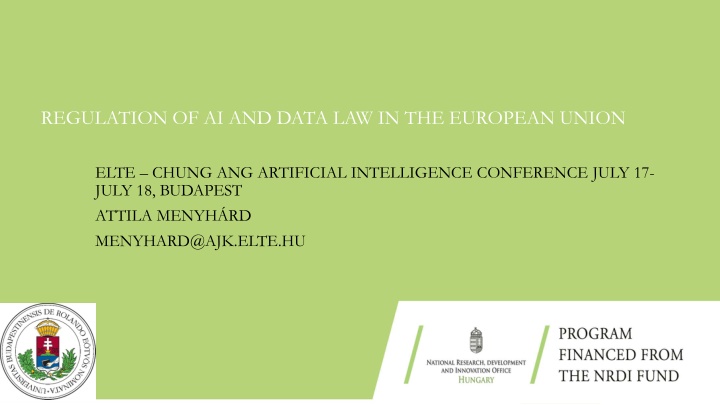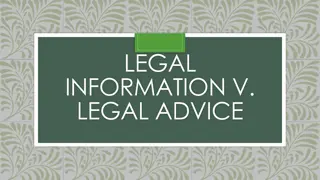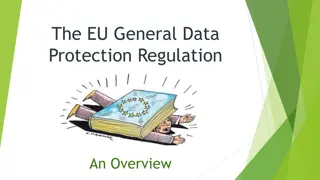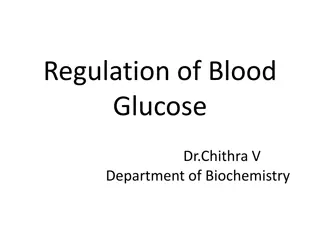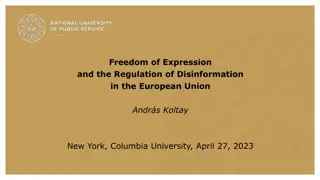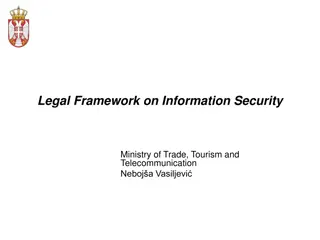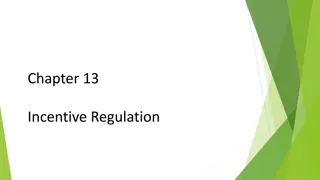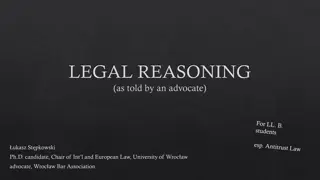Challenges and Legal Framework for AI Regulation in the EU
Addressing the complexities of regulating artificial intelligence and data law in the European Union, the ELTE Chung Ang Artificial Intelligence Conference delves into the challenges requiring legal answers, the balance between regulation and law enforcement, and the evolving nature of legal norms in response to technological advancements. Key themes include the need for clear norms, the role of legislators in predicting and addressing future issues, and concerns related to data privacy, discrimination, and surveillance capitalism.
Download Presentation

Please find below an Image/Link to download the presentation.
The content on the website is provided AS IS for your information and personal use only. It may not be sold, licensed, or shared on other websites without obtaining consent from the author.If you encounter any issues during the download, it is possible that the publisher has removed the file from their server.
You are allowed to download the files provided on this website for personal or commercial use, subject to the condition that they are used lawfully. All files are the property of their respective owners.
The content on the website is provided AS IS for your information and personal use only. It may not be sold, licensed, or shared on other websites without obtaining consent from the author.
E N D
Presentation Transcript
REGULATION OF AI AND DATA LAW IN THE EUROPEAN UNION ELTE CHUNG ANG ARTIFICIAL INTELLIGENCE CONFERENCE JULY 17- JULY 18, BUDAPEST ATTILA MENYH RD MENYHARD@AJK.ELTE.HU
Douglas Adams: our view on technology Anything that is in the world when you re born is normal and ordinary and is just a natural part of the way the world works Anything that s invented between when you re fifteen and thirty-five is new and exciting and revolutionary and you can probably get a career in it Anything invented after you re thirty-five is against the natural order of things
Some fundamental questions What are the challenges requiring legal answers and what are old problems in new clothes? On what level the law should react? national vs international How strong intervention of the state is needed? Regulation vs law public law vs private law enforcement
Regulation (more or less) clear norms provided by the legislator ex ante reaction: rules exist before the addressed conduct is performed implements an up-to-bottom approach legislator predicts future problems and tries to answer them before they occur there is no future-proof regulation regulation is to be adjusted to social changes legislator is the policy maker
Law broad rules and standards are provided by the legislator ex post reaction: compliance with the standards assessed after the conduct implements a bottom-up approach courts reflect existing social conflicts no need for predicting the future but concretizing standards court is the policy maker
Mass production vs efficiency Decision making is opaque huge amount of data, role of algorithm, autonomous decision making, Difficult to identify causal link in case harm occurs High risk of discrimination High risk of interference with privacy Weakening trust Consequences of surveillance capitalism role of private companies
Pillars of legal answers The approach Human factor is assumed, fundamental rights (human rights) centered, individual rights are in the focus Pillars protecting privacy preventing harm fairness and explainability guarateeing validity of data (compliance)
Main challenge in policy making Safety vs efficiency Increasing competitiveness of the ecomony while maintaining guarantees Allocating the risks of innovation State of art defense? innovation is necessary to increase competitiveness innovation involves risks less strict approach justified? Socially unjust consequences may arise: the price of social benefit is paid by the victims Insurance and social security system can be a solution
European approach: regulation Regulating markets / e-commerce Regulating the development of Artificial Intelligence Data law
AI Regulation Regulation instead of information model Risk-based approach instead of value-based approach Data - validation and liability Software - transparent and explainable Computing capacity
Regulating AI Unacceptable recognition, dark pattern AI, manipulative AI risk: social scoring, facial Unacceptable: prohibited High risk: education, employment, justice, legal, banking and insurance services, immigration High: compliance testing (validation) Limited risk: chat bots, deep fake, emotion recognition systems Limited: transparency requirement Minimal risk: video games, "spam" filters Minimum: general rules on what to expect
Ex ante protection in the focus Risk management system: to be operated for high-risk MI Risk management Quality management an uninterrupted iterative process throughout the lifecycle of the AI system Compliance (compliance) Regulatory control Register Liability: illegality vs "state of art" defence? 4
AI Liability Directive No uniform liability system Liability risks Risk of autonomous behaviour (loss of human control) In human/machine collaboration, human and machine behaviour cannot be separated ("Liability gap") Interconnectivity: the "collective" behaviour of connected machines Allocating the burden of proof Shifting burden of proof to the service provider, where the service provider is the one who develops or has developed an AI system to place it on the market or put it into service on its own behalf Use of AI developed by others: liability for intermediaries 4
Compliance The focus is expected to be on compliance both in terms of data and software Compliance is a complex issue compliance with fundamental rights human dignity, equal treatment, right to privacy legality of data use and data validation, limitation of data monopolies Including e.g. issues related to automated decision making (SCHUFA case, OQ v Land Hesse (Case C-634/21) interpretation of GDPR 22 (1) - "credit scoring" as automated decision making) compliance with risk allocation (safety and security) Key factor: cooperation between legal assistance and engineers (software developers)
The double face of data Two starting points for data and information protection personal data: privacy commercially useful secrets/trade secrets/know-how Public thinking focus protection, BUT Increasing focus on the business and public use of data: data as value Central issue: the allocation of consent to the use of data as a right data: private on personal data
Data Act Regulation of the European Parliament and of the Council on harmonised rules on fair access to and use of data (Data Act) Focus on: allocating the rights to use the data generated by the proliferation of non-personal industrial data and products related to the Internet of Things B2B, B2G, G2B and G2G relational data flows facilitating data access and use facilitate switching between cloud and edge services provision for the development of interoperability standards for data to be reused across sectors compensating for the disadvantaged market position of small and medium-sized enterprises
The expectations More data will be available and the Regulation will regulate who can use what data in each economic sector and for what purposes. The Commission expects the new rules to generate an extra 270 billion in GDP by 2028 it is estimated that only 20% of the data recorded is used, the rest is lost limits the ability to exploit monopoly positions
Scope of the Data Act make data generated through the use of products or related services available to the user of that product or service the provision of data by data owners to data recipients, and the provision of data by data owners to public sector bodies or Union institutions, agencies or bodies on the basis of an exceptional need in order to carry out their tasks in the public interest "data" means any digital representation of acts, facts or information, or compilations of such acts, facts or information, including in the form of sound, images or audiovisual recordings
Typical situation AI-driven devices typically give the manufacturer exclusive access to the data generated by the device (data monopoly) Data Monopoly: enables the sale of exclusive data-driven services to users The company does not have access to industrial and commercial data generated in the course of its activities (including non-personal data relevant to its activities) and cannot use them for other purposes or access competing data-based services This distorts competition in data-based services markets
Example The legislation ensures that, for example, a farmer can access the agricultural data collected by his tractor and share it with other machines or agronomic service providers used with the tractor This may allow you to get better farming advice or fine-tune the use of seeders and sprayers currently, agricultural machinery manufacturers can prevent access to and transmission of data and force farmers to use their own related agronomic services
The product The Data Act limits its scope to data generated by physical devices The basis for distinguishing between "product" and "non-product" data is not clear A product is something that acquires, generates or collects data about its environment and is able to transmit this data via a publicly available electronic communication service (IoT). Certain products designed primarily for the display or playback of content or for the recording and transmission of content are not covered by this Regulation personal computers, servers, tablets and smartphones, cameras, webcams, voice recording systems and text readers Delimitation: "machines" vs computing devices
